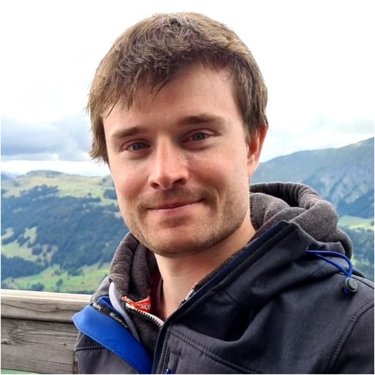The formation of fiber waviness during thermoplastic composite laminate consolidation
Due to the COVID-19 crisis the PhD defence of Erik Krämer will take place (partly) online.
The PhD defence can be followed by a live stream.
Erik Krämer is PhD student in the research group Production Technology (PT). His supervisor is prof.dr.ir. R. Akkerman from the Faculty of Engineering Technology (ET).
 Reduction of the environmental impact is a key issue in the aviation industry. A significant contribution can be made by improving the fuel economy of aircraft. To this end, lightweight design is crucial. Carbon fiber reinforced thermoplastic polymers have become a serious competitor for lightweight metals due to their high specific stiffness and strength, their chemical resistance, toughness, and their ability to be molten, shaped and solidified in a matter of minutes. The main promise of thermoplastic composites is cost-effective and rapid production of high-performance lightweight composite parts.
Reduction of the environmental impact is a key issue in the aviation industry. A significant contribution can be made by improving the fuel economy of aircraft. To this end, lightweight design is crucial. Carbon fiber reinforced thermoplastic polymers have become a serious competitor for lightweight metals due to their high specific stiffness and strength, their chemical resistance, toughness, and their ability to be molten, shaped and solidified in a matter of minutes. The main promise of thermoplastic composites is cost-effective and rapid production of high-performance lightweight composite parts.
However, manufacturing of thermoplastic composite parts is complex and the maturity of manufacturing technologies is still quite low, compared with thermoset composites. The relative immaturity is associated with occasional defects that may occur during part manufacturing. One of the defects that requires attention is fiber waviness, as it has the potential for a significant knockdown in the part performance. Therefore, the objective of this thesis is to acquire a fundamental understanding of the underlying mechanisms for the formation of fiber waviness and provide guidelines for the production of waviness-free thermoplastic composite parts. Although fiber waviness is observed in a wide range of manufacturing process, this thesis mainly focuses on vacuum-bag only consolidation of flat laminates.
Firstly, a novel fiber tracing algorithm was developed for quantifying the degree of fiber waviness in surface micrographs of composite parts. The algorithm provides the wavelength, amplitude, and the maximum misalignment angle, which are the relevant parameters to objectively describe the shape and geometry of fiber waviness. The proposed method is fast and accurate, and enables the potential for a handheld waviness characterization device in the industry.
In further research, the key phenomena that govern the formation of fiber waviness during processing have been identified. The introduction of a compressive stress in the longitudinal direction may lead to buckling of the fibers, while the transverse stabilization around the fiber suppresses buckling. This axial stress originates from tool shrinkage during cooling. Furthermore, the displacements of the shrinking tool are transferred to the laminate via tool-ply friction. Consolidation experiments with a glass tool plate allowed for real-time observation of the formation of waviness and the solidification of the laminate. These experiments showed that waviness forms between the processing temperature and the crystallization temperature.
A subsequent study showed that the degree of fiber waviness is influenced by the processing temperature, the coefficient of thermal expansion of the tool material, and the coefficient of tool-ply friction. The tool-ply friction is affected by the combination of release media. It was demonstrated that the use of a release agent already decreases the tool-ply friction significantly, while a combination of release film and release agent decreased the coefficient of tool-ply friction by an order of magnitude.
The identified mechanisms have been incorporated in a basic analytical model to describe the formation of in-plane fiber waviness during the consolidation process, to help defining the processing window for the production of waviness-free laminates. The model is based on buckling of a fiber on an elastic foundation. It describes the fiber buckling stress and the length of the waviness-free edge of a laminate, as well as the post-buckling amplitude and wavelength. The outcome is a first order approximation of the degree of fiber waviness in a laminate.
The work presented in this thesis shows that the formation of fiber waviness during semi-crystalline laminate consolidation depends on the interplay between the tool coefficient of thermal expansion, the tool-ply friction coefficient, the processing temperature and the crystallization temperature. Altogether, this research provides a fundamental basis for further development of a waviness-free processing route for thermoplastic composite parts.

